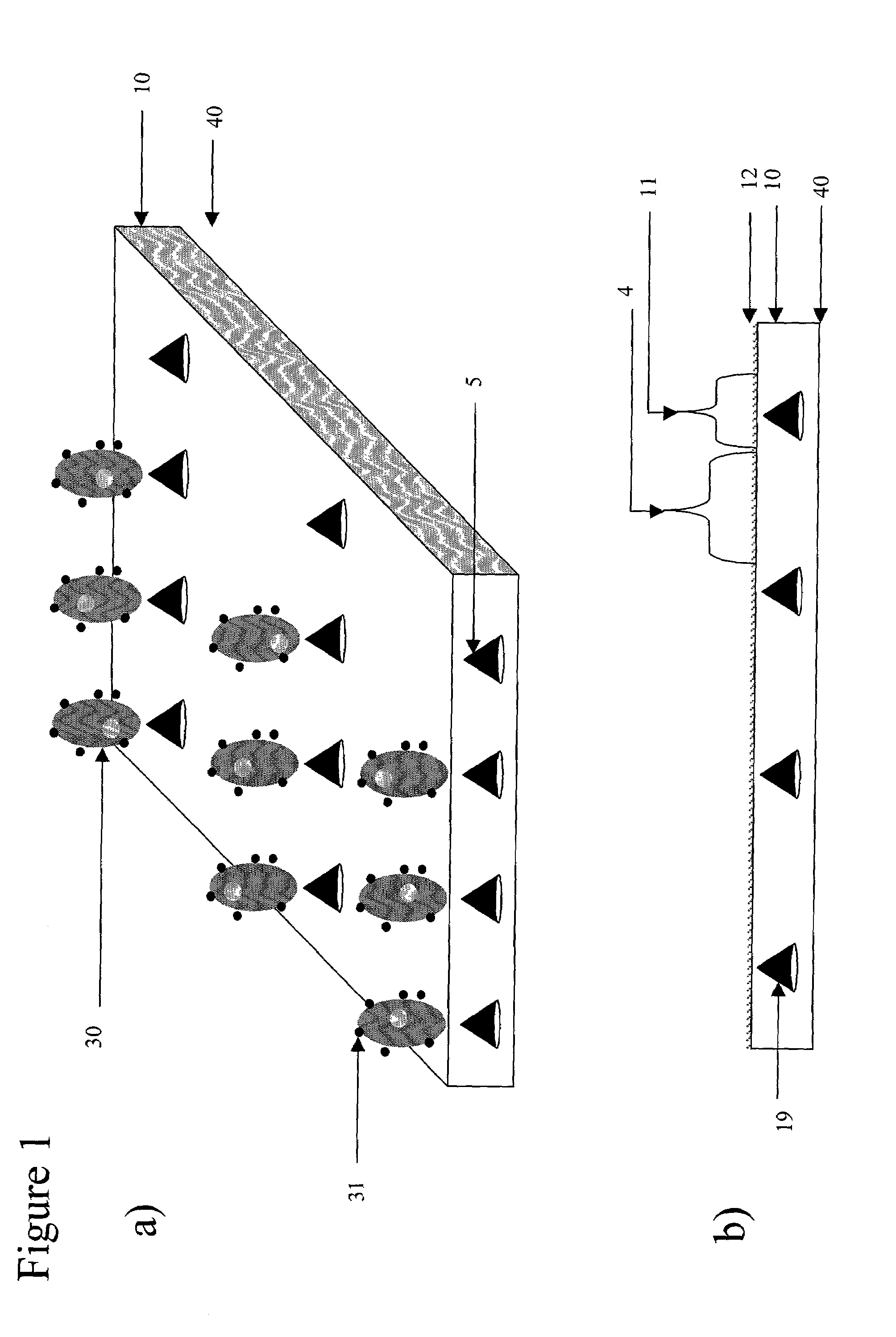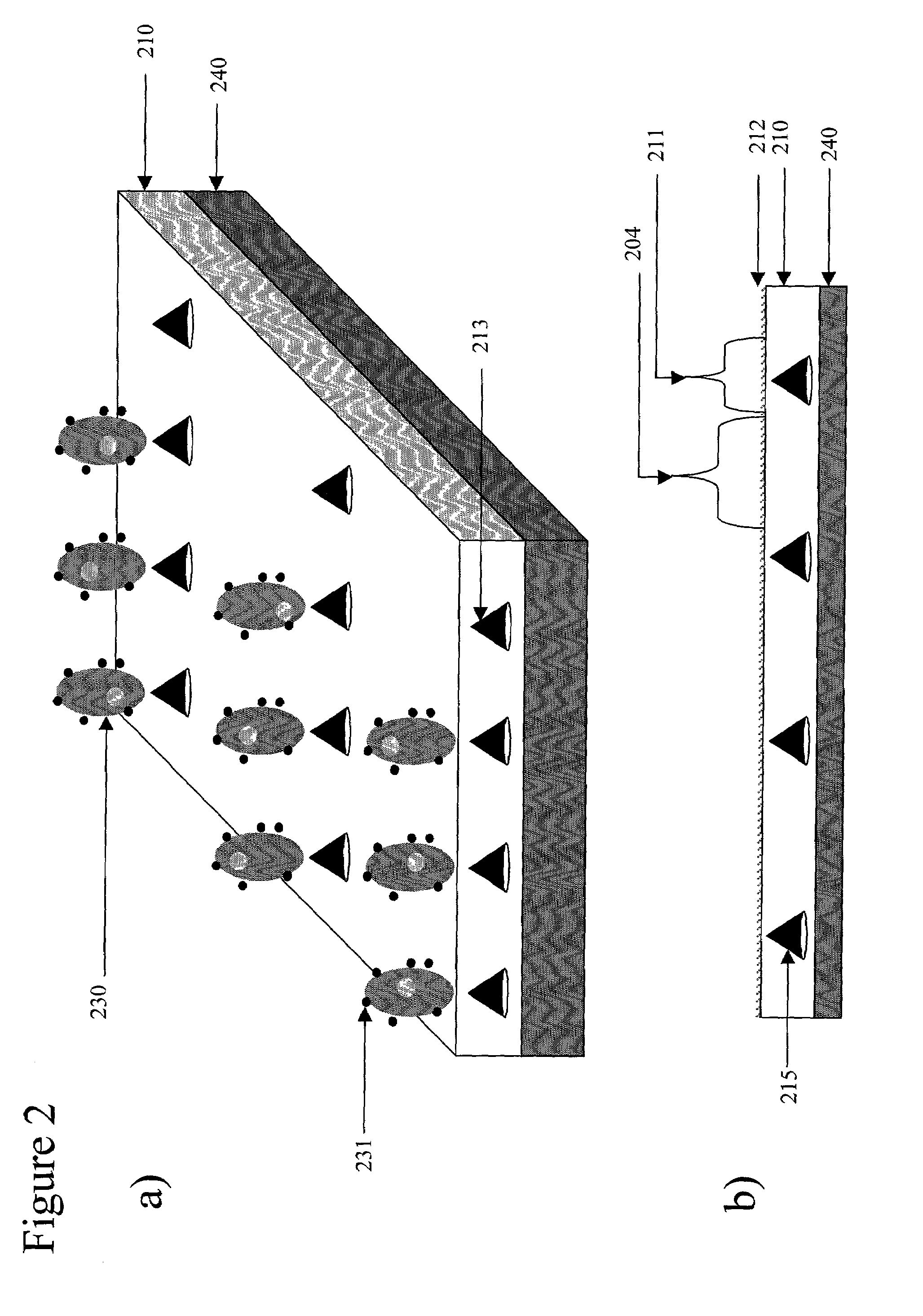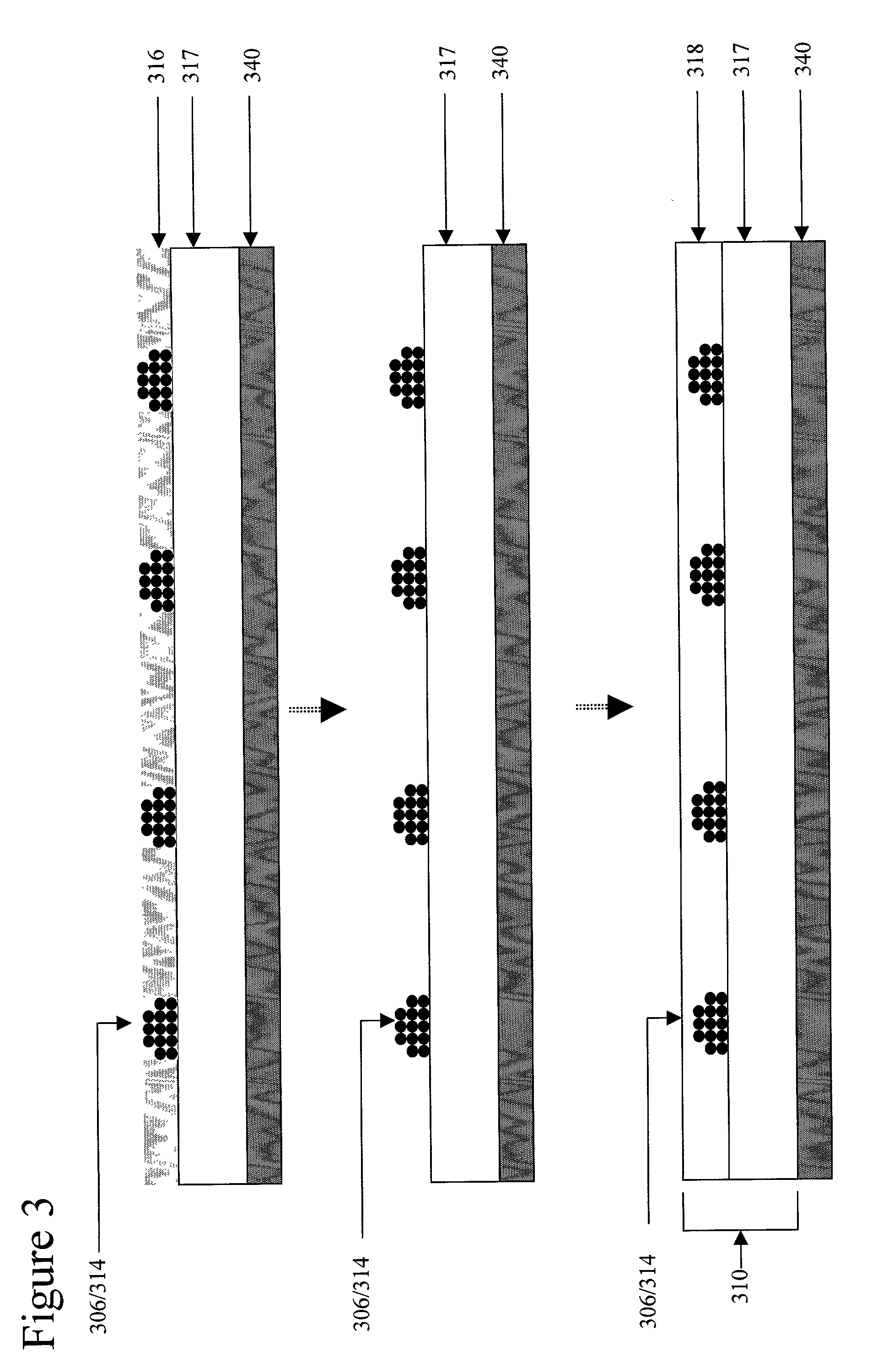Device for magnetic immobilization of cells
a cell and magnetic technology, applied in the field of cell magnetic immobilization devices, can solve the problems of not being particularly suited to the immobilization or micromanipulation of individual cells, mechanical holding methods tend to obscure or damage the target cells, and the sorting of cells into pools does not allow the investigator to experiment on or manipulate individual cells, etc., to achieve strong yet more uniform external magnetic field, increase the effect of magnetic force and small for
- Summary
- Abstract
- Description
- Claims
- Application Information
AI Technical Summary
Benefits of technology
Problems solved by technology
Method used
Image
Examples
example 1
[0101]Several permanent neodymium iron boron magnets each with a strength of 12,000 Gauss, are embedded in a PDMS substrate. A magnetic bead-containing phosphate buffered saline (PBS) solution is introduced to a cell panning device mated to the substrate. 2 ml of magnetic beads in suspension (Spherotech™ 9 μm diameter beads at a density of 1×106 beads / μl suspension) are uniformly distributed by cell panning. The coupled substrate and cell delivery device are rotated for a period of 30 minutes at 0.5 RPM. The substrate with immobilized beads is washed with cell-free PBS. The local magnetic field gradient derived from each of the permanent magnets captures several thousand beads on the PDMS substrate above the embedded magnets, forming the desired array on the substrate.
example 2
[0102]Several permanent neodymium iron boron magnets each with a strength of 12,000 Gauss, are embedded in the PDMS substrate. 1 ml Spherotech™ (1840 Industrial Dr., Suite 270 Libertyville, Ill. 60048-9467) 9 μm diameter magnetic beads at a density of 1×106 beads / μl suspension coated with the bioaffinity ligand streptavidin are pre-incubated with a biotinylated anti-mouse anti-syndecan antibody at a final antibody concentration of 50 μg / ml. The antibody conjugated beads are then washed to PBS remove unbound antibody. 1 ml hybridoma cells (2×105 / μl) in RPMI media are then incubated with 1 ml antibody conjugated Spherotech™ 9 μm diameter magnetic beads at a density of 1×106 beads / μl suspension 2 ml of the magnetic bead and cell containing RPMI media (Sigma; www.sigma-aldrich.com) is introduced to the cell panning device mated to the substrate. The coupled substrate and cell delivery device are rotated for a period of 3 hours at 3 RPM. The substrate with immobilized cells is washed wit...
example 3
[0103]Several localized magnetic field gradients are derived from several small permanent magnetic pins embedded in PDMS with their tips coplanar with the substrate. The permanently magnetic pins generate a several localized magnetic field gradients, each with an attractive force of about 5×10−13 Newtons on cells associated with magnetic material passing over the substrate. 1 ml Spherotech™ 9 μm diameter magnetic beads at a density of 1×106 beads / μl suspension coated with the bioaffinity ligand streptavidin are pre-incubated with a biotinylated anti-mouse anti-syndecan antibody at a final antibody concentration of 50 μg / ml. The antibody conjugated beads are then washed to PBS remove unbound antibody. 1 ml hybridoma cells (2×105 / μl) in RPMI media are then incubated with 1 ml antibody conjugated Spherotech™ 9 μm diameter magnetic beads at a density of 1×106 beads / μl suspension 50 μl of the magnetic bead and cell containing RPMI media (Sigma) is introduced into the in-port of the cell ...
PUM
| Property | Measurement | Unit |
|---|---|---|
| size | aaaaa | aaaaa |
| cell diameter | aaaaa | aaaaa |
| cell diameter | aaaaa | aaaaa |
Abstract
Description
Claims
Application Information
 Login to View More
Login to View More - R&D
- Intellectual Property
- Life Sciences
- Materials
- Tech Scout
- Unparalleled Data Quality
- Higher Quality Content
- 60% Fewer Hallucinations
Browse by: Latest US Patents, China's latest patents, Technical Efficacy Thesaurus, Application Domain, Technology Topic, Popular Technical Reports.
© 2025 PatSnap. All rights reserved.Legal|Privacy policy|Modern Slavery Act Transparency Statement|Sitemap|About US| Contact US: help@patsnap.com



